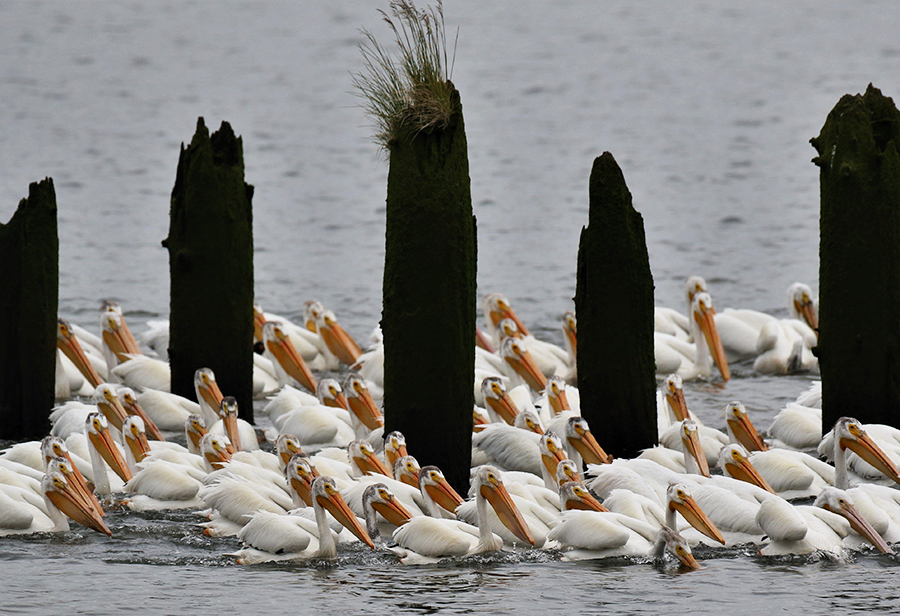
The Sibley Guide to Birds says the American white pelican is a rare visitor to the Oregon Coast. Photographer and naturalist Neal Maine has been seeing these large birds—twice the size of brown pelicans—along the lower Columbia River for years. But not until this fall had he seen them regularly in Youngs Bay, and in such large numbers: as many as 150, on the shore or bobbing together on the water. Other people noticed too; Neal regularly got calls from acquaintances who had spotted the birds while driving across the bridge between Warrenton and Astoria. Neal also saw them upstream, such as in this photo, clustered around some ghost pilings near Astoria High School.
Once he spotted a band on one bird’s leg; after zooming in on it with a telephoto lens, he made out the numbers on the band, which revealed that the bird has been banded near Knappa in 2012 by wildlife ecologist Dan Roby. Certainly that pelican was not a stranger to the lower Columbia.
Why so many here, now? Neal speculates that it might have something to do with changes in the food chain, changes possibly linked to climate change. And it strengthens the arguments for broad, landscape-scale habitat protection, giving wildlife room to roam as conditions change.
“Habitat boundary changes are becoming more common with wildlife in general but birds in particular,” Neal notes. “Why are the pelicans in Youngs Bay now? Is there something big going on out there that we don’t have a measuring stick to assess?”
What he does know: “Without habitat, things can’t live.”

Comments